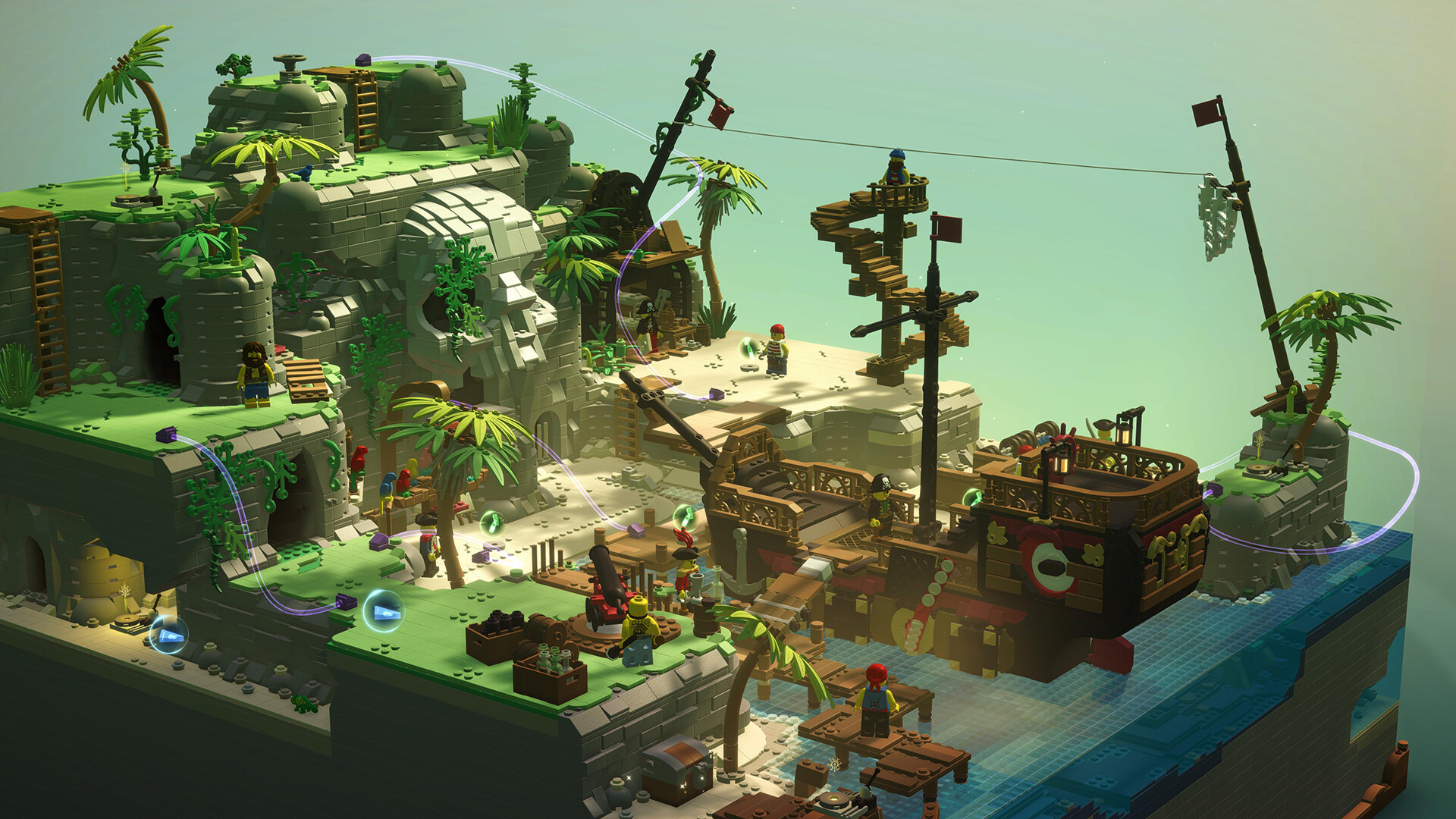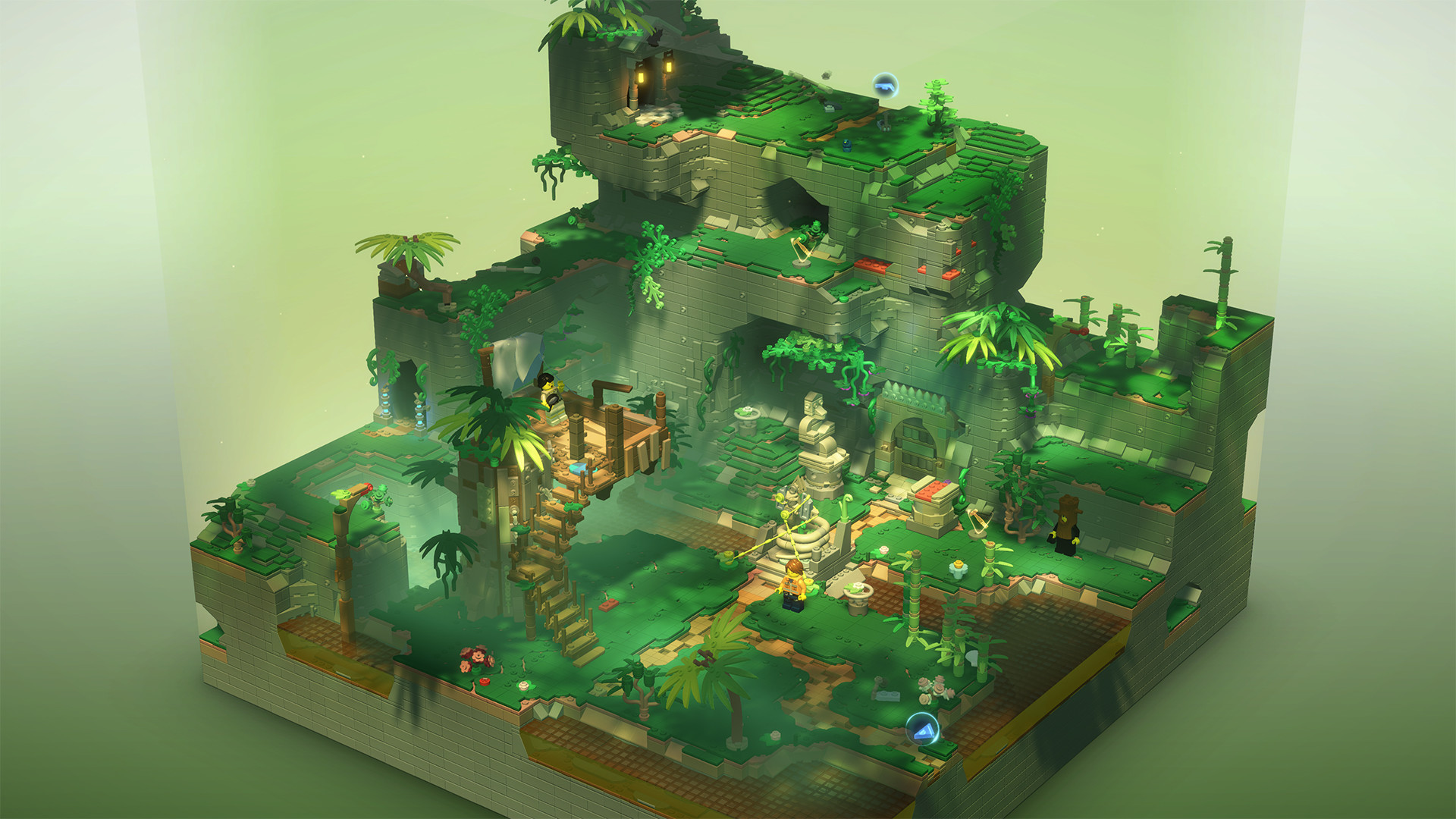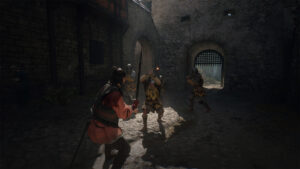
You’d think a building-focused game would be the bread and butter for Lego’s video games, the greatest building toy in the world. While other licensed Lego games, like the recent Skywalker Saga, take the majority of the mindshare for the IP, there hasn’t been much in the way of a real building-focused game, at least until now. Lego Bricktales comes to us from Clockstone, the creators of the Bridge Constructor series, leveraging their building expertise on the Lego platform. It’s a match made in heaven on paper, and in practice it works mostly well. While the actual brick-by-brick building falls into the same pitfalls on a controller as many strategy games have in the past, the story and open world around the building mechanic really bring the game to life, despite being overly cheesy and self-aware. It’s not a game that’s going to give you much of a mental strain or a deep, immersive world, but for a Lego building game set in a Lego world, it does its job well enough.
Assuming it’s not retelling an existing story, a game set in a world built with small plastic bricks doesn’t need a complicated or intense setup, and Lego Bricktales knows that. Off the bat, it doesn’t take itself too seriously and benefits from that decision. The setup is that your grandpa has asked you to revitalize his abandoned theme park, and you need to use a portal he created to acquire energy to power the new rides. This takes you to five unique worlds, ranging from the simple jungle world to the more entertaining medieval and Caribbean worlds, where your goal is to retrieve a Happiness Crystal to supply energy, usually by doing some busywork for characters in these worlds.
"While the actual brick-by-brick building falls into the same pitfalls on a controller as many strategy games have in the past, the story and open world around the building mechanic really bring the game to life, despite being overly cheesy and self-aware. It’s not a game that’s going to give you much of a mental strain or a deep, immersive world, but for a Lego building game set in a Lego world, it does its job well enough."
A good number of these small tasks see you taking control of a Lego set and building something to help you out in the world. These usually fall into two categories. The first is to build a specific object, like a generator or a drone, with specific guidelines needing to be met. Some of these builds even resemble real-life Lego sets, albeit pared down significantly, by making you reconstruct an item piece by piece to match exactly as the instructions say. The other type of build is a more interesting, creative affair where you are given a certain number and type of blocks and told to make some kind of structure, like a bridge or staircase, without it collapsing. The game is relatively generous with the pieces it gives you, both in number and in type, but I certainly felt the most challenged and engaged when I was given more freedom in my building. Regardless of build type, you have a good amount of license as to how much creativity you want to put into each structure. Do you want a flat bridge that gets you from one place to another, or do you want a complicated, multi-layer masterpiece? The choice is yours. There’s even a free build mode that removes the limits on piece amounts or types.
The difficulty level for building any of the required structures can vary, though with a couple notable exceptions, they’re mostly relatively straightforward. The mechanics of actually building a structure can be a bit frustrating, though, and it takes some patience to get used to it. Building at the level of precision needed to build with Lego’s has never been a strong suit of either a controller or console, and it suffers here. The automatic depth snapping is relatively intuitive, but when it doesn’t work, depth perception can be almost impossible to read. Especially with smaller pieces, it usually takes some trial and error to even put the block in your intended spot.
Testing structures can take unnecessarily long, too. The game does a performance simulation with robots, but it doesn’t do a great job at telling why something broke or when a ledge or gap is too much for them to handle, which makes for a good amount of time wasted with fruitless simulations. It’s also worth noting that as the game went along, response times during builds began to slow down, and I’d be waiting a second or two each time I tried to select a block. It might not seem like a huge difference each time, but combining the few extra seconds without immediate feedback makes for a sometimes frustrating build experience.
"As the game went along, response times during builds began to slow down, and I’d be waiting a second or two each time I tried to select a block. It might not seem like a huge difference each time, but combining the few extra seconds without immediate feedback makes for a sometimes frustrating build experience."
Outside of builds, Lego Bricktales has a surprisingly interesting open world, despite it having very few original ideas. Each world will have you visiting a main person, such as a scientist in the city world or a king in the medieval world, and fulfilling an ultimate request to acquire the Happiness Crystal. The writing does its best to give the characters some personality, especially your robot partner, who plays a Clank-like role and drives most of the conversations. However, almost every conversation boils down to what task a certain person wants you to do for them, regardless of how much the game directly acknowledges it.
While many of the tasks require builds, there are a few other interesting gameplay mechanics that come into play. In each world, you gain a new superpower, like seeing invisible objects in the world or spraying water, and these allow you to both solve puzzles around the world and reach new or hidden areas with collectibles. These superpowers allow you to travel back to any of the worlds you’ve been to and find new secrets or puzzles. None of the puzzles at any point are particularly difficult, but they definitely make use of the mechanics well, and the collectibles strike a great balance between being commonly visible and difficult to acquire.
None of the worlds are particularly large or filled with content. I was able to get through each of the five main worlds’ stories in 1-2 hours each with around a 60% overall completion, but in doing so, they never get boring or overstay their welcome. While it’s difficult to say the worlds are graphically impressive, they are all about as visually unique as different Lego environments can be and cover a surprising amount of verticality. Traversal can be a bit annoying when the isometric camera gets in the way, but it’s an overall relatively easygoing gameplay experience that makes the most of the time between builds.
"None of the worlds are particularly large or filled with content. I was able to get through each of the five main worlds’ stories in 1-2 hours each with around a 60% overall completion, but in doing so, they never get boring or overstay their welcome."
Lego Bricktales rides the wave of successful Lego games but makes one of the more pure Lego experiences I’ve seen in a game by focusing heavily on the building aspect, and as such, the building experience is a good amount of fun. There’s nothing incredibly special about its mechanics, nor does it do everything right, but with its idea of giving you freedom to build how you want and, more often than not, what you want, there’s a lot of creative license you can take to build like you would in real life, with the same frustrations and trial and error a real Lego set would bring. The game attempts to contextualize everything with a surprisingly successful, if not entirely unique or immersive sequence of worlds, especially with some of the surprisingly thoughtful puzzles and use of superpowers. This isn’t a game that’s going to blow you away in any single aspect, but it’s a highly relaxing, satisfying experience that allows you to build your own creations and see them come to life in a true Lego context.
This game was reviewed on the Xbox Series X.
Satisfying building; Solid puzzle mechanics; Good collectible balance; Enjoyable balance of difficulty and calmness.
Building mechanic stiffness and response times; Uneven build difficulty; Overlooked story.


















